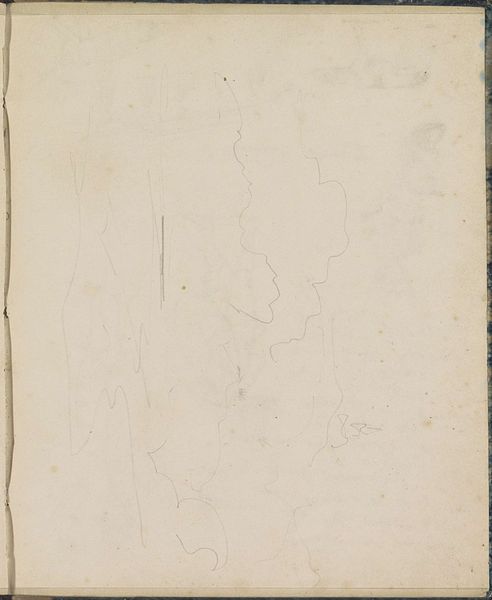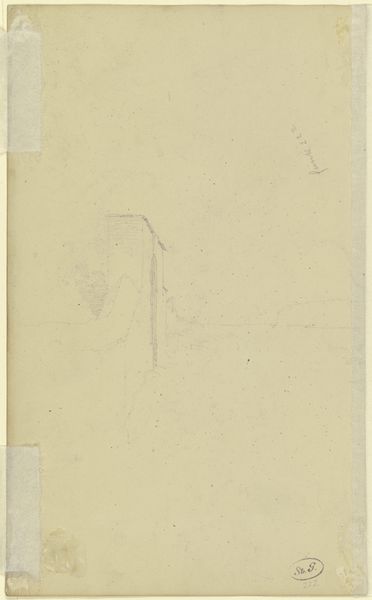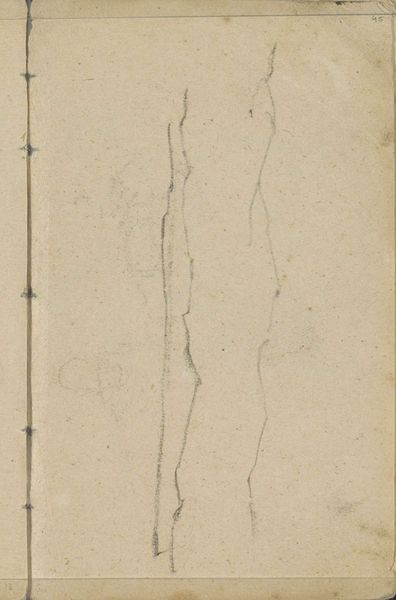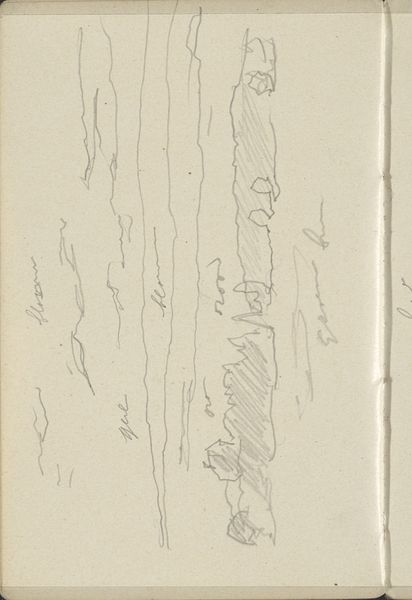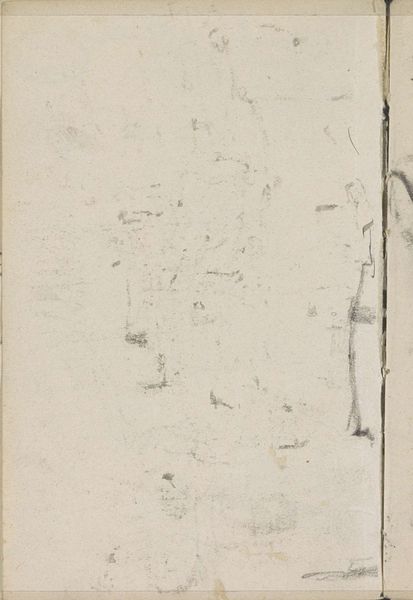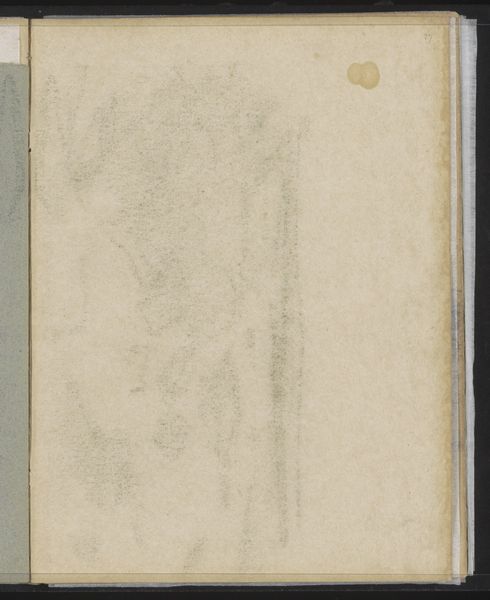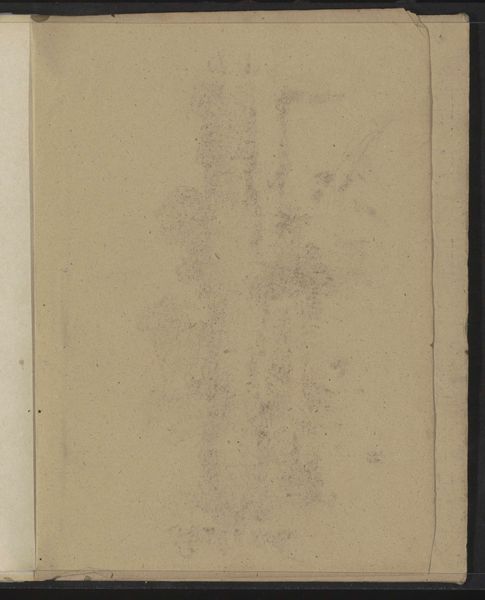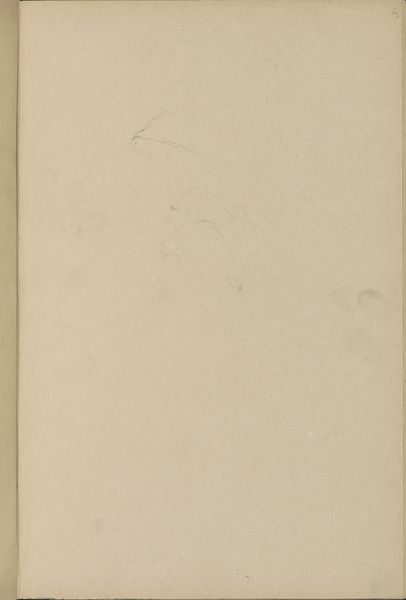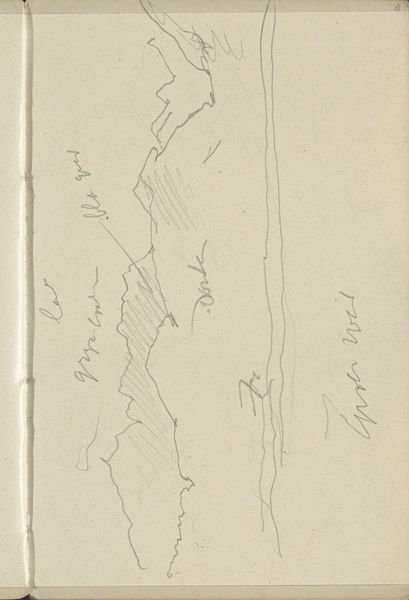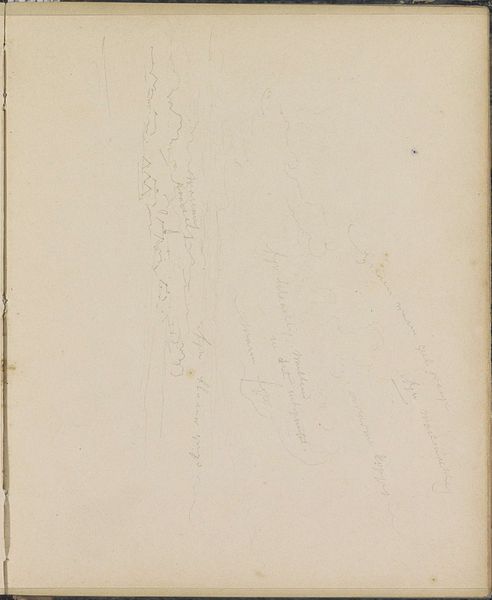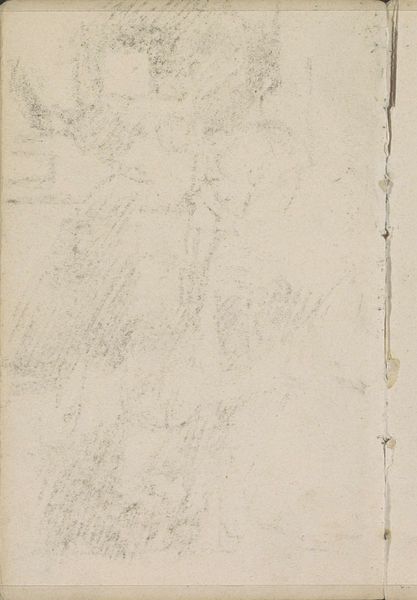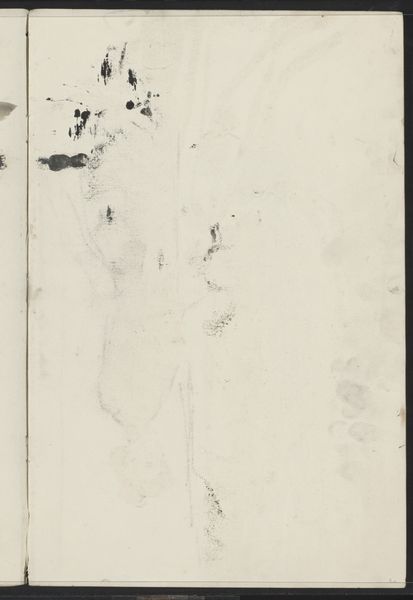
Copyright: Rijks Museum: Open Domain
Curator: Looking at Breitner’s “Landschap,” likely made around 1915-1916, I see the ghost of a coastline, barely there on the page. It’s held by the Rijksmuseum. What strikes you first? Editor: A quietness. The bareness of the page contrasting against the tentative yet deliberate marks of the pencil and ink – almost as if the landscape is exhaling onto the paper, not aggressively asserting itself. You feel the weight of the graphite on the page; it shows a sort of planned labor and care with mark-making. Curator: Absolutely. It’s a whisper, not a shout. Considering his more celebrated works, full of the bustle of Amsterdam, this feels like Breitner catching his breath. One can see how his practice using photography could allow for preliminary planning using a material lens and then applying more labor-intensive mediums on top. What's so compelling is the implied landscape held back here. I wonder if he intended to return to it. There's a sensitivity in the unforced nature of the rendering. The lines that exist do so sparingly, as if extracted directly from his memory. Editor: Agreed. Think about the context, though – a man known for urban scenes retreats to something sparer. There’s the tension between the mass production he witnessed in urbanity with more manual methods, perhaps. The paper itself is fascinating; seeing the sketchbook binding gives us another piece of materiality to interact with. And this almost casual use of such inexpensive materials. Pen and pencil sketch. No heavy oils. What's the significance, do you suppose, of keeping it so simple, just marks and material, in a moment of such drastic societal shift? Curator: Perhaps a deliberate simplicity, or perhaps only a step in a bigger process for the artist, to create a future painting based on past documentation through photography. It makes me think about the essence of what defines "landscape.” Is it the detail, the flourish, or simply the raw, almost cartographic markings defining space? A landscape in essence requires an "extraction” of its raw existence. Editor: Right. The tools and materials dictate the limitations, and somehow that’s enough. Thinking about the industry surrounding the sketch: what pen did he use? The grain of the pencil? Did this landscape continue with his industrial growth, too? Curator: A lovely question to ponder – this interaction of material, tool, environment. It makes this “Landschap” less a picture and more a record, in which we read and re-read his engagement in the landscape as an entity with form. Editor: Absolutely. It offers the sense of the landscape's potential while holding us in the present, as we grapple with the physical creation and materiality involved with its labor, reminding us of his hand at work.
Comments
No comments
Be the first to comment and join the conversation on the ultimate creative platform.

